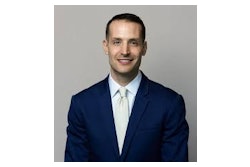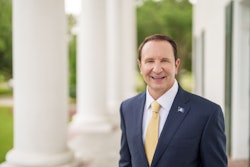College Graduation Rates Moving to Top
Of Agenda for Education Leaders, Policy-makers
NEW YORK
For decades, getting more students into college has been the top priority of America’s higher education leaders. But what’s the point, a growing number of experts are wondering, when so few who go to school leave with a degree?
Just 54 percent of students entering four-year colleges in 1997 had a degree six years later, according to some of the latest government figures. The numbers for Black and Hispanic students are even lower.
After borrowing for school but failing to graduate, many of those students may be worse off than if they had never attended college at all.
Now the question of what to do about the country’s underwhelming graduation rates is on the agenda, from college presidents’ offices to state houses. Former Princeton University President William Bowen recently laid out an agenda during a speech in New York.
Normally, a scholar’s decision to take on an academic topic is hardly news. But Bowen, president of the Andrew W. Mellon Foundation, is the kind of researcher whose work is so influential that his very curiosity about a subject can raise its profile.
His studies on college athletes, affirmative action and college access for the poor have all sparked nationwide debate in recent years, and he attracted widespread attention last year with a speech at the University of Virginia that called for class-based affirmative action in college admissions. Bowen’s latest project will examine in detail who graduates and who doesn’t — and why — at a group of about 20 varied universities.
It’s known that elite schools have generally higher graduation rates than non-elite schools. But what’s less clear is why the graduation rates at seemingly similar colleges vary so much. For example, the main campuses of Pennsylvania State University and the University of Minnesota have comparable price tags, student SAT scores and percentage of students from poor backgrounds. Yet Penn State graduates more than 80 percent of its students, and Minnesota barely half.
Racial gaps are another concern. Overall, the federal figures report 57 percent of White students finish their degree, compared with 44 percent of Hispanics and 39 percent of Blacks. A 2004 Education Trust report found a quarter of schools have gaps between Whites and Blacks of 20 points or more.
Traditionally, experts say, blame has fallen on high schools, or on the students themselves.
“You walk into a high school and 50 percent of the kids aren’t graduating, people say ‘What’s the matter with this place? Get me the principal. Get me the school board. Let’s put this place in receivership,’” says Patrick Callan, president of the National Center for Public Policy and Higher Education. “But people walk into [a college] and say ‘What’s the matter with these students? We gave them a chance to go to college.’”
While student responsibility is a factor, “an awful lot of institutions just assumed that getting them in the door was the most important thing,” adds Kati Haycock, director of The Education Trust.
Now, Haycock and Callan say signs are indicating a change in the philosophy. Graduation rates are on the agenda of U.S. Secretary of Education Margaret Spellings’ new national commission on higher education. There is growing research on how colleges can get students more involved in campus life, which makes them more likely to stay enrolled. And Callan says some state legislatures, even in the face of pressure to increase capacity, are exploring budget incentives for schools to improve graduation rates, not just increase enrollment.
— Associated Press
© Copyright 2005 by DiverseEducation.com


















